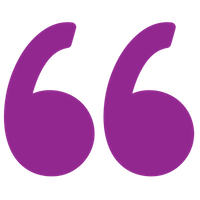Choosing recovery close to home means your support system is just a few miles away.
- 100% Confidential
- Available 24/7
- No Pressure to Commit
- Multiple Financial Options Available
Choosing recovery close to home means your support system is just a few miles away.

Providing addiction recovery to help you live beyond
(317) 449-8029Addiction doesn’t define who you are. Whether it’s alcohol, one specific drug, or multiple drugs, Landmark Recovery of Indianapolis’ treatment programs create environments designed to help you achieve long-term sobriety. Tackling addiction to drugs and alcohol can cause your body to experience physical, psychological and behavioral symptoms. Our drug and alcohol detox center will help you manage the moderate-to-severe symptoms of withdrawal in a safe environment, returning your body to a healthy and sober state. Our treatment programs are among Indiana’s best. After you’ve completed a 30-day residential treatment at our facility, our clinicians and medical staff recommend an intensive outpatient program (IOP) for continued support and resources to help you live beyond addiction.
Recognized as one of the best drug and alcohol rehab centers in Indianapolis, our treatment programs offer a holistic approach to recovery. We take pride in offering the most affordable addiction recovery services in Indianapolis. Our treatment facility is in northwest Indianapolis. Take exit 21 from Interstate 465, and Landmark of Recovery of Indianapolis is located behind Gatsby’s Pub and Grill. Our facility treats both the physical and mental aspects of addiction with proven, evidence-based therapies and counseling.

We're here 24/7 to help you get the care you need to live the life you want. Talk to our recovery specialists today and start treatment immediately.
The first stage of the recovery process involves undergoing medical detox to flush out all traces of drugs and/or alcohol from your system. It’s highly recommended that alcohol or drug detox occurs under medical supervision at a professional addiction treatment center. Detox can be extremely uncomfortable and potentially life-threatening due to withdrawal symptoms that are often experienced when substance use is discontinued, especially for those individuals who have developed a chemical dependency.
We accept in-state and out-of-state patients and proudly support our military veterans. Landmark Recovery does not discriminate on the basis of age, sex or gender.
All patients are provided with personalized treatment plans that include science-backed modalities for treating the body, mind and spirit. Depending on your specific needs, your customized treatment program could include:
Conveniently located just minutes from Interstate 465, Landmark Recovery of Indianapolis provides a secure environment where you can comfortably detox, free from the influence of outside triggers and temptations. Our 15,449-square-foot detox and residential center in Indianapolis includes 72 beds total. Each unit has 2-3 beds, a shared bathroom per men’s unit and a communal bathroom for the women’s unit. We have a basketball hoop in the courtyard. Patients also have access to treadmills and exercise bikes in our workout rooms.
During inpatient rehab at Landmark Recovery of Indianapolis, patients follow a schedule that includes intensive therapy, counseling and classes to help you achieve long-term sobriety. Evidence suggests that a daily activity schedule helps patients focus on healing, building inner strength and developing the skills they need to stay sober. Residential treatment patients also receive three meals a day. Our patient engagement specialists are always nearby to answer any questions and provide support.




Landmark's goal to save as many lives as possible is ambitious but driven by the belief that recovery is possible. If you're struggling with addiction, Landmark is here to help. Let us count you, one among many, as another life restored.

“I was at Landmark from July 6 until August 16. All the staff was so welcoming and kind. I’ve unfortunately had my share of rehab visits, but Landmark was by far the best! They gave us all the tools we would need outside of the security of the rehab walls. It is now almost April and I am thankfully still clean and I would not be where I am if it wasn’t for Landmark and their staff. I owe them my life. Thank you Landmark!”
-Rachel J.

“Landmark Recovery saved my life. I am thankful every day that I was able to get in there as quickly as I did. The staff is amazing and has been nothing but helpful, supportive and dedicated to furthering my recovery. I couldn't have asked for a better experience.”
-Alan S.

“Because of this program and the staff and therapists, I'll be leaving with new perspectives and new joys. I'm ready to face the outside with wisdom and strength. I'm looking forward to giving back as much as I can by serving people like me who came in here lost. I'm looking forward to working in my new found humility and becoming part of the Landmark Team!!”
-Jeffrey C.
At Landmark Recovery of Indianapolis, we know that no two addictions are the same. That’s why we develop individualized treatment plans that fit you and your specific needs. We go beyond drug and alcohol addiction treatment to treat underlying conditions like chemical dependency, co-occurring disorders, mental health and behavioral health issues. The most successful path to recovery combines detox with residential treatment and intensive outpatient treatment. When a patient leaves Landmark Recovery, we continue to provide them with the support they need to manage their addiction. While our rehab programs will be customized, we have treatment options for all levels of care.
Under the care of doctors, we will help wean you off your addictive substance in a safe and comfortable way. Drug and alcohol detox is the first step in your recovery process and can last between 7-13 days depending on your level of chemical dependency.
More about Medical DetoxFull-time, residential treatment allows you to focus solely on your recovery. We provide all meals and a daily schedule that includes therapy sessions, group discussions, and the time you need to rest and recover. Most patients stay between 30 and 45 days.
More about Residential TreatmentA level of care for those in need of support as they reintegrate into the community. Part-time hospitalization can include boarding or outpatient programs, depending on your support needs. This level of addiction treatment offers flexibility.
More about Partial HospitalizationIntensive outpatient during addiction recovery can be a good option for newly sober adults who no longer suffer from withdrawal symptoms, but still need strong support programs. Outpatient treatment is often recommended after completion of a residential treatment program.
More about Intensive Outpatient TreatmentAt Landmark Recovery of Indianapolis, our team of highly qualified professionals offers a comprehensive, 30-day inpatient treatment program catered to each patient’s needs, goals and diagnoses. Here’s what you can expect from your personalized treatment plan in five stages:
Addiction Assessment
The program starts with an initial assessment by a physician or nurse practitioner to determine whether detoxification or medication-assisted treatment is necessary.
Medical Detox
Once detoxification is complete, treatment continues with individual and group therapy by licensed counselors.
Therapy
Additional therapies like SMART Recovery, 12-Step Program, Mindfulness and Recreations therapy are introduced per the patient’s beliefs and desired holistic rehab approach.
Family Counseling
Core family members are brought into the process through extensive family counseling and education.
Recovery Support
At the conclusion of inpatient rehab, each patient receives consistent follow-up support from our staff and detailed action plans designed to see them through the rest of their recovery
Addiction in Indianapolis is a growing problem. In fact, one out of every 12 Indiana residents fits the criteria to be diagnosed with substance use disorder, according to Indiana University.
Landmark Recovery of Indianapolis is looking to change those statistics by providing local, patient-centric care to those who need addiction treatment. If you or someone you know needs addiction treatment, call 317-449-8029 to talk to a recovery specialist today.
Landmark Recovery of Indianapolis is one of the most affordable drug and alcohol rehab centers in Indiana. We strive to make addiction recovery affordable and attainable to anyone who needs it. The cost of medical detox and rehab varies from person to person. Treatment plans, medications, levels of care and insurance coverage all play a factor in determining how much addiction recovery could cost.
Some people delay addiction treatment because they believe it’s too expensive. But the costs associated with an untreated addiction far outweigh the cost of a recovery center. The cost of drugs and alcohol used by someone with an addiction typically surpass the price of treatment for substance abuse. There are also emotional and physical costs, including health problems, broken relationships and poor self-image that often accompany an addiction. While detox and rehab is an investment, it’s one that pays off. Sobriety leads to a better life.
Landmark Recovery offers payment plans which can help make the paying for substance abuse treatment more manageable. Details of repayment options are specific to each individual circumstance, based on a variety of factors. For the most accurate information on your personal repayment options, we recommend that you speak with our admissions team by calling us at 317-449-8029.
Landmark Recovery of Indianapolis accepts most major health insurance providers on both a national and local level.






Landmark Recovery works with all insurance providers, even if we do not have a contract with them. We will work with you to find a way to pay for detox and rehab. Landmark offers affordable inpatient and outpatient rehab treatment plans and many payment options to ensure you get the care you need to live the life you want. We believe that everyone deserves access to drug or alcohol rehab treatment services.
Call us at 888-448-0302 to learn more about your coverage or payment options.
(317) 449-8029
Nicole Carter
Executive Director
Nicole has been with Landmark Recovery since August 2019 and helped open both our Indianapolis and Carmel locations in Indiana! Nicole is passionate about people, and decided to work for Landmark because she felt the desire to join something special that upheld core values that positively impacted lives. Her goal is to provide top notch care along with an amazing culture for both patients and staff.
“To watch our patients trust us during their most vulnerable time in their life, witness them begin to heal physically and spiritually and to experience their successful graduation of our program equipped with the tools they need to continue their journey is what it’s all about for me.”
Outside of work, Nicole is married with two children and a fur baby, her golden doodle who she calls Happy Hailey!

Landmark Recovery of Indianapolis exists to serve the surrounding areas. We provide an environment for our patients to receive the best clinical treatment for substance use disorders. Indianapolis is a centrally located city in Marion County between major urban hubs, which makes it an ideal location to begin your recovery journey. Our doctors and clinicians will help you unlock your potential along the way. We focus on nothing else beyond providing you recovery in a conductive and productive environment.

Landmark Recovery ensures we have the best-experienced addiction counselors leading our individual, group and family therapy sessions at our facilities. Each patient is assigned an individual therapist who works collaboratively with the provider and case management to ensure the most comprehensive treatment plan possible.

Landmark Recovery provides an alumni program for all those who graduate our programs. Our network of support gives alumni access to a support community to help maintain lasting recovery.

If we’re going to treat people in this country who suffer from substance use disorders, then one of our goals should be to make addiction treatment as affordable as possible. Cars and houses are wildly expensive, but getting the right addiction treatment is priceless. No matter what the cost is, we've taken it upon ourselves to make affordable treatment available for those who need it. We're also extremely proud to accept Medicaid treatment through our Praxis locations across the Midwest and beyond.
Addiction is a complex but treatable disease. Landmark Recovery of Indianapolis can help you overcome drug and alcohol addiction using medical detox and evidence-based treatment plans.
Through the substance abuse treatment plans we offer at Landmark Recovery of Indianapolis, our goal is to stop a crippling trend of drug overdose in Indiana. The Hoosier State experienced more than 1,800 drug overdose deaths in 2018, 17.5% involving an opioid. More recently, Indiana drug overdose deaths saw a higher year-over-year increase (33.1%) than the national average (29.4%). From 2019 to 2020, drug overdose deaths in Indiana rose from 1,704 to 2,268.
Excessive alcohol use and opioid overdose is a public health problem in Indiana. More than 1,900 deaths in Indiana each year can be attributed to excessive alcohol use, according to the National Center for Drug Abuse Statistics. Conversely, from 2011 to 2015 the rate of non-fatal emergency department visits due to opioid overdoses increased from 28.5 to 45 occurrences per 100,000 population, according to the Indiana State Department of Health.
Addiction is a crisis that when untreated can cause death and damage to the future generation of Hoosiers. In 2016, more than 50% of the cases where children were removed from the home by the Indiana Department of Child Services involved family drug use, according to Indiana University.
The number of Indiana residents admitted for drug and alcohol treatment increased from 24,054 in 2010 to 37,077 in 2019. Landmark Recovery of Indianapolis is here to help those in need of substance abuse treatment.
Research shows that alcohol is the most abused substance in the state of Indiana. More than 6% of adults over the age of 18 reported alcohol use disorder in 2018. Underage drinking is also common for young adults in the Hoosier state. More than 21% of the population ages 12-20 reported using alcohol in the past month, according to the Substance Abuse and Mental Health Services Administration (SAMHSA). In that same year, 1.6% of teenagers ages 12-17 reported an alcohol use disorder.
Marijuana use has nearly doubled in the state of Indiana in recent years. On average, more than 16% of people 12 years or older used marijuana in the years 2017 to 2019. Over a similar timeframe, from 2002-2004, the annual average of marijuana use was less than 10%, according to SAMHSA. People with a marijuana use disorder may experience health problems, such as problems with attention, memory and learning.
Heroin represents a lower percentage of substance use in the state of Indiana. SAMHSA reports past years' heroin use at 0.39% from 2017-2019. Heroin is still very easy to get addicted to. It enters the brain, converts to morphine and binds to opioid receptors. People who have used heroin reported feelings of pleasure, or a “rush.”
More than 17% of the drug overdose deaths in the state of Indiana involved opioids in 2018, according to the National Institute on Drug Abuse. This percentage represents the ongoing opioid overdose crisis in the United States. An annual average of 1% of Indiana residents over the age of 12 reported a past years' opioid use disorder from 2017-2019.
Cocaine use among Indiana residents has decreased throughout the years. Initially the third-most reported drug of choice within the treatment population, according to IUPUI, cocaine use in Indiana decreased from 12% to less than 4% between 2005 and 2014. The effects of cocaine can cause the user to feel overjoyed and heighten their sight, sound, and touch, according to the National Institute on Drug Abuse.
Short for Methamphetamine, the production and abuse of meth usage is spreading from rural to urban areas in the state of Indiana. Meth was involved in 100 of the 361 drug overdose deaths in 2018 in Marion County, where Landmark Recovery of Indianapolis operates. Small amounts of methamphetamine can reportedly cause users to experience high amounts of energy while decreasing appetite.
No matter what substance you use, be it drugs or alcohol, detox from long-term addiction can be a hard road. Landmark Recovery of Indianapolis provides safe, medically sound detox treatment that will manage your withdrawal and start you on the road to recovery.
Learn more about Medical DetoxFor many individuals, detox represents the most difficult stage of the recovery journey. This is because as addictive substances are being flushed out of the body, the brain typically goes into withdrawal as it adjusts to normal functioning without the presence of drugs or alcohol. Depending on the substance of abuse and length and severity of addiction, you can experience a range of unpleasant withdrawal symptoms when you stop drinking or using drugs.
Yes. There are designated areas in our rehab facilities where you can smoke. However, please be advised that all cigarettes brought into the facility must be in unopened packs or cartons. Any cigarettes sent or brought by family/friends must also be unopened. Staff can discuss the rules with you in more detail at admission.
Yes, we can provide repayment options in most cases. Details of repayment options are specific to each individual circumstance, based on a variety of factors. For the most accurate information on your personal repayment options, we recommend that you speak with our admissions team by calling us at 888-448-0302.
Yes. You will be able to speak to your loved one while they are in treatment. Once they have completed our detox level of their care, they will be able to start making calls to family members. They will also have Family Day every Friday as part of their programming, which includes therapeutic activities for families to participate in together, lunch, and visitation time.
We accept all major insurance plans at our commercial locations (including TriWest for veterans) and Medicaid at our Praxis locations. To learn more about insurance and treatment cost, contact our admissions team at 888-448-0302
Yes, we provide dial diagnostics with multiple treatment modalities. Treating addiction is our core mission with the addition of treating the root causes that influence substance use disorders.
Yes. Landmark Recovery accepts both men and women at our facility, but we typically have separate gender-specific dormitory wings for maximum privacy. We do not discriminate on the basis of sex.
Yes. In fact, Landmark Recovery allows patients to go through every step of their treatment under the same roof.
Ready for recovery? We're here to help you take the next step.